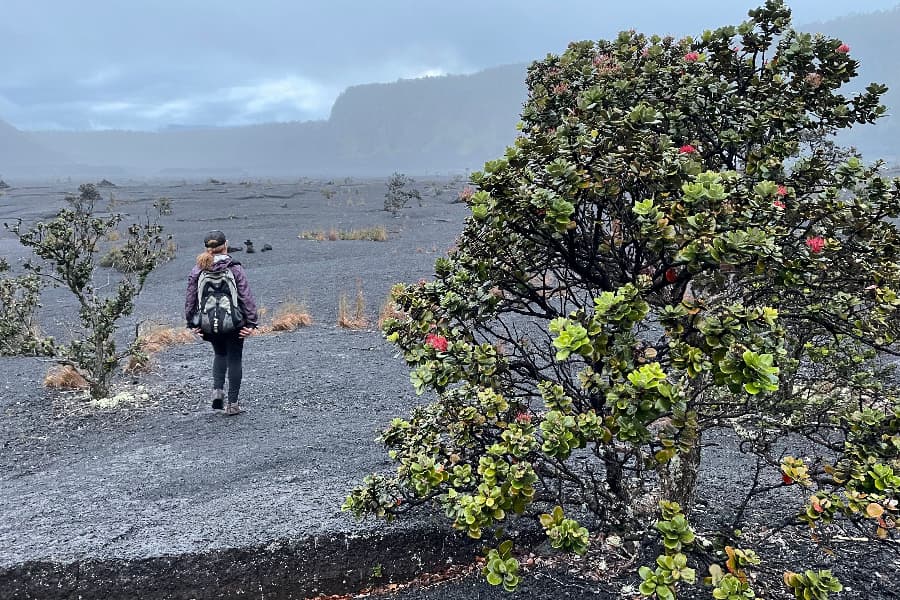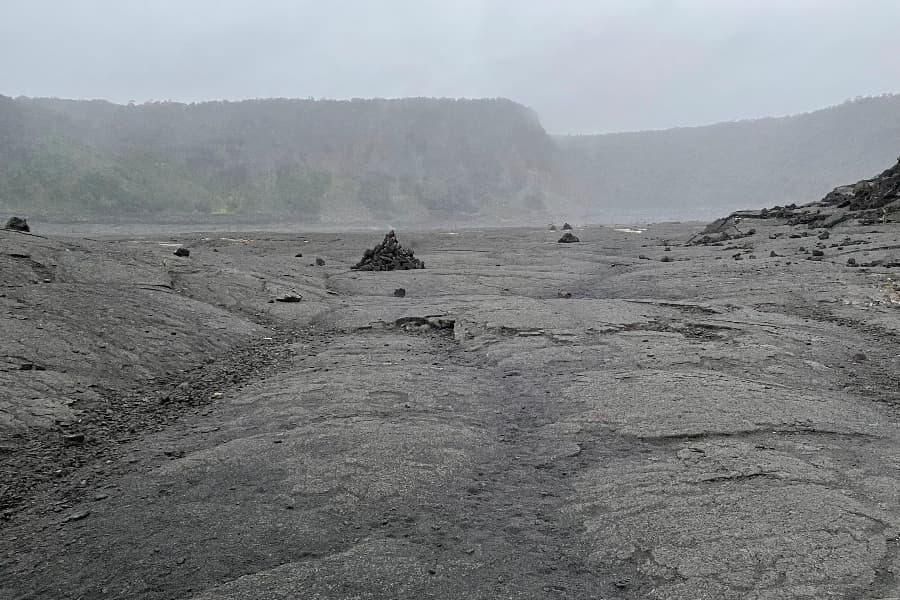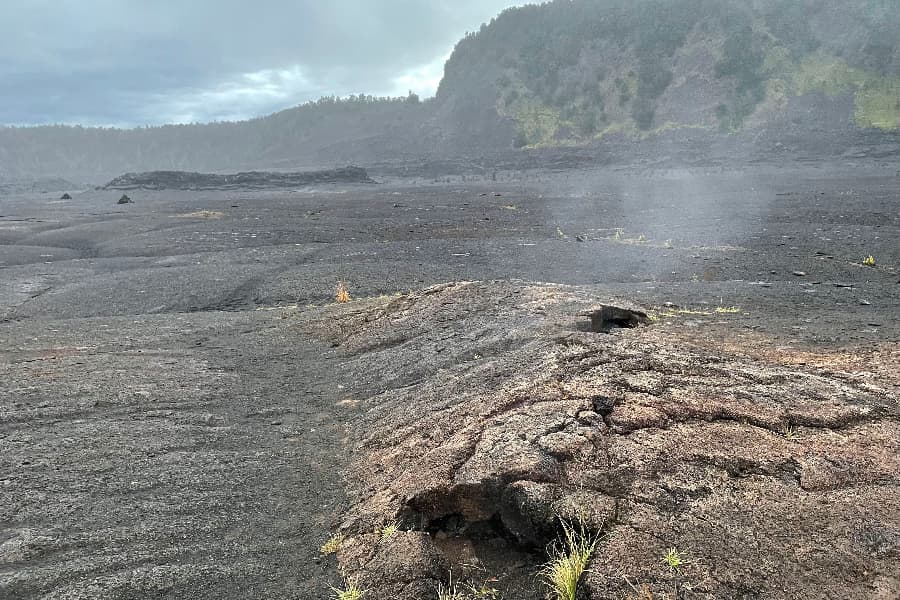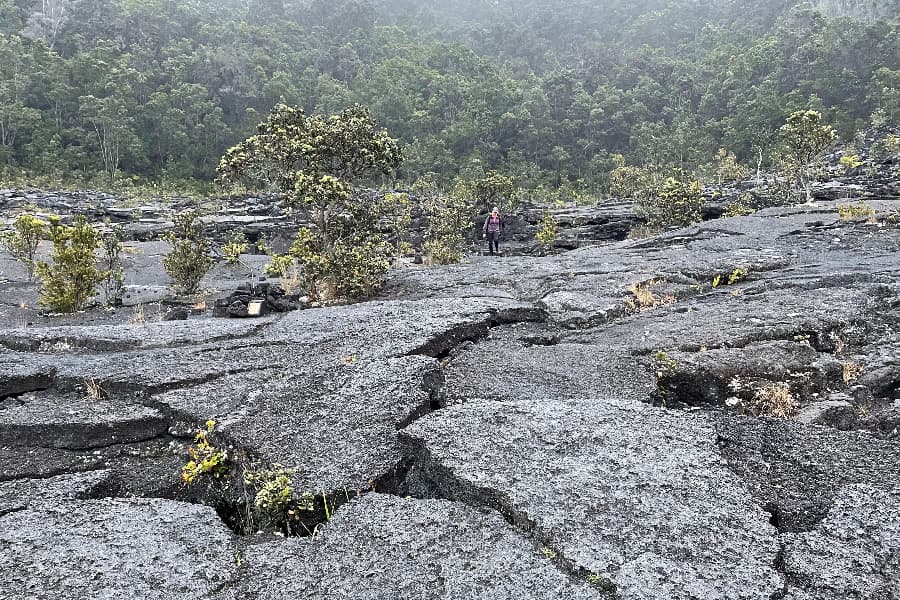A “Little” Kilauea With a Huge History
Kilauea Iki, which means “little Kilauea” in Hawaiian, is one of Hawaii Volcanoes National Park’s landmarks. Not to be overshadowed by its larger sibling Kilauea – the most active volcano in the world – Kilauea Iki has a remarkable story of explosive eruptions, shaping the volcanic zone you can explore today on the Kilauea Iki Trail.
Just over six decades ago, in the fall of 1959, thousands of earthquakes a day began rumbling below the surface of what is now a hardened lava lake. Over three months, several massive eruptions spewed fountains of lava from a half-mile-long fissure, shooting upward with spectacular force, reaching up to 1,900 feet high (the highest of any volcano in the 20th century). In addition to creating a massive lava lake, volcanic fragments piled up and formed the Pu’u Pua’i cinder cone, one of many highlights along the trail’s route.


Options for Getting to Kilauea Iki
Just a few miles down the road from Volcano Village Estates, you can park at either the Kilauea Iki Overlook or the Kilauea Visitor Center, depending on how long of a hike you’re looking to do. Kilauea Iki Overlook provides the most direct access to the trail and is a shorter 3.3-mile loop, usually taking 2-3 hours. But due to its popularity, parking is often full here (try to visit early or late in the day, when parking is easier to come by, and you’ll get the extra treat of a sunrise/sunset from the volcanic rim). A parking spot is usually easier to find at Kilauea Visitor Center, where the hike is slightly longer, at 5.3 miles overall, so plan for 3-4 hours for that route. If you’re feeling extra adventurous, ride a bike into the park, which is $15 cheaper than driving into the park with a vehicle.


A Hike That Descends From Rainforest to Lava Lake
At the start of the hike, you’ll quickly enter the lush rainforest surrounding the entire rim of Kilauea Iki. Keep an eye out for hapu’u pulu ferns, which are native to Hawaii and can grow up to 30 feet tall, and the Pa’iniu lily, a beautiful flower reestablishing itself after being endangered. Soon, the views dramatically shift as you descend 400 feet to the hardened-lava valley floor below.
As you cross the mile-wide expanse, you’ll be stepping on the same surface that erupted in 1959. And although the churning magma is now encased some 300 feet below the volcanic floor, rainwater still gets into the cracks and creates steam from the immense internal heat. Use extreme caution when around this steam, as it is scalding hot, and out of respect to Hawaiian volcanic deity Pele, leave the always-shifting volcanic rock as you find it. As you travel across this otherworldly landscape, follow the cairns and trail signs, which will guide you to the Pu’u Pua’i cinder cone, eventually wrapping up the route by ascending the same crater wall that you descended at the start.
After breaking a sweat on the Kilauea Iki loop, cool down in the nearby Nahuku Thurston lava tube, a centuries-old lava cave whose chilly confines extend 600 feet underground.
Book your stay with us and plan your epic hike on the Kilauea Iki Trail!

